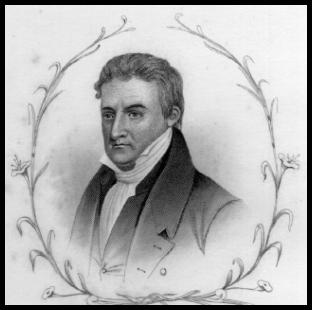
The Presbyterian Church (USA), abbreviated PC(USA), is a mainline Protestant denomination in the United States. It is the largest Presbyterian denomination in the US, and known for its liberal stance on doctrine and its ordaining of women and members of the LGBT community as elders and ministers. The PC(USA) was established by the 1983 merger of the Presbyterian Church in the United States, whose churches were located in the Southern and border states, with the United Presbyterian Church in the United States of America, whose congregations could be found in every state. The similarly named Presbyterian Church in America is a separate denomination whose congregations can also trace their history to the various schisms and mergers of Presbyterian churches in the United States. Unlike the PCA, the PC(USA) supports the ordination of women and affirms same-sex marriage. It also welcomes practicing gay and lesbian persons to serve in leadership positions as ministers, deacons, elders, and trustees.

The Cumberland Presbyterian Church is a Presbyterian denomination spawned by the Second Great Awakening. In 2019, it had 65,087 members and 673 congregations, of which 51 were located outside of the United States. The word Cumberland comes from the Cumberland River valley where the church was founded.

The Presbyterian Church in the United States of America (PCUSA) was the first national Presbyterian denomination in the United States, existing from 1789 to 1958. In that year, the PCUSA merged with the United Presbyterian Church of North America, a denomination with roots in the Seceder and Covenanter traditions of Presbyterianism. The new church was named the United Presbyterian Church in the United States of America. It was a predecessor to the contemporary Presbyterian Church (USA).
The Upper Cumberland Presbyterian Church is a Christian denomination in the United States with fewer than 1,000 members among twelve congregations in Alabama and Tennessee.

Louisa Mariah Layman Woosley was the first woman ordained as a minister in any Presbyterian denomination. She was ordained by the Cumberland Presbyterian Church on November 5, 1889.

Finis Ewing was the primary founder of the Cumberland Presbyterian Denomination on February 4, 1810.
The Council of Revival Ministers was a group of disaffected Presbyterian clergy in the frontier areas of Kentucky and Tennessee. Ejected by the Presbyterian Church in 1805, these ministers banded together to better tend their congregations while they sought to address their grievances with the church. In 1810, when it became clear that no redress was forthcoming, most of the Council joined with Finis Ewing in the formation of the Cumberland Presbyterian Church.
James Wade Knight was a Cumberland Presbyterian minister. He served as that denomination's first Director of Ministry and was the Executive of Kentucky Synod.
Kentucky Synod was a synod of the Presbyterian Church in the United States of America established in the late 18th century. As a body, Kentucky Synod was a great deal more conservative than the Presbyterian Church as a whole — especially in its opposition to many aspects of the Second Great Awakening, a revival movement that thrived in Kentucky from about 1798 to about 1820. Synod suspended or deposed a number of revivalist Presbyterian ministers, but these men continued to preach to their former congregations. Eventually, Barton W. Stone, who abandoned Washington Presbytery in 1803, formed Springfield Presbytery, which eventually became the Christian Church. In 1810, ministers from the former Cumberland Presbytery, which had been dissolved by Synod five years earlier, left the church and created an independent presbytery which became the Cumberland Presbyterian Church.
The Cumberland Presbyterian Church in America is a historically African-American denomination which developed from the Cumberland Presbyterian Church in 1874.
Cumberland College in Princeton, Kentucky, was founded in 1826 and operated until 1861. It was the first college affiliated with the Cumberland Presbyterian Church. In 1842, the Cumberland Presbyterian denomination withdrew its support from Cumberland College in favor of Cumberland University in Lebanon, Tennessee. In doing so, the denomination intended to simply relocate the school from Princeton to Lebanon, but Cumberland College remained open without denominational support until the Civil War.
Transylvania Presbytery of the Presbyterian Church (U.S.A.), as it was established in 1786 from part of Abingdon Presbytery, encompassed all of Kentucky, settlements on the Cumberland River in Tennessee, and later the settlements on the Great Miami River and Little Miami River in Ohio.
West Lexington Presbytery of the Presbyterian Church (USA) was formed from Transylvania Presbytery in 1799. It covered the area of Kentucky between the Kentucky River and the Licking River. In 1802, the West Lexington, Transylvania, and Washington Presbyteries were formed into Kentucky Synod, separate from the Synod of Virginia.

Synod of the Trinity is an upper judicatory of the Presbyterian Church headquartered in Camp Hill, Pennsylvania. The synod oversees sixteen presbyteries covering all of Pennsylvania, most of West Virginia, and a portion of eastern Ohio.
The Old Side–New Side controversy occurred within the Presbyterian Church in Colonial America and was part of the wider theological controversy surrounding the First Great Awakening. The Old and New Side Presbyterians existed as separate churches from 1741 until 1758. The name of Old Side–New Side is usually meant as specifically referring to the Presbyterian Church. When one is referring to the debate as a whole, Old and New Light is usually used.

The Old School–New School controversy was a schism of the Presbyterian Church in the United States of America which took place in 1837 and lasted for over 20 years. The Old School, led by Charles Hodge of Princeton Theological Seminary, was much more conservative theologically and did not support the revival movement. It called for traditional Calvinist orthodoxy as outlined in the Westminster standards.
Rev. James McGready (1763–1817) was a Presbyterian minister and a revivalist during the Second Great Awakening in the United States of America. He was one of the most important figures of the Second Great Awakening in the American frontier.

Presbyterianism has had a presence in the United States since colonial times and has exerted an important influence over broader American religion and culture.
The Revival of 1800, also known as the Red River Revival, was a series of evangelical Christian meetings which began in Logan County, Kentucky. These ignited the subsequent events and influenced several of the leaders of the Second Great Awakening. The events represented a transition from British traditions to innovations arising from the unique needs and culture of Americans in the new century, especially on the frontier. The startling manifestations of revival fervor that first occurred in June 1800 at the Red River Meeting House, a small Presbyterian congregation led by James McGready, began as a Scottish sacrament service, but led to the important innovation of serial religious services later known as camp meetings.